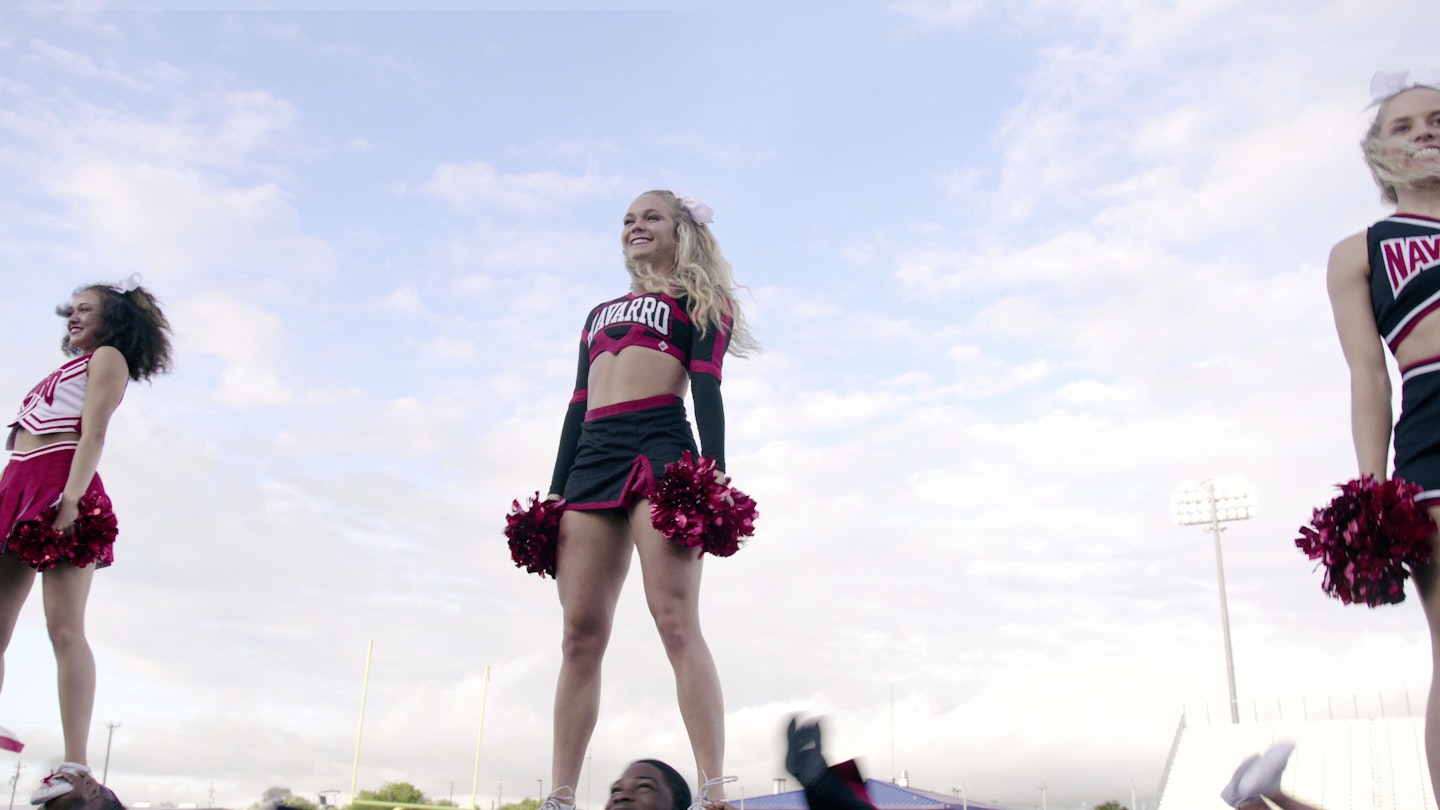I remember the first time I sprained my wrist cheerleading. I was hoisting a girl into the air and felt something twinge as I contorted my hand around the back of her shoe. The fifth time it happened, I was mid-stunt again. But by then, I’d learned to smile through the pain and carry on.
As a competitive cheerleader on the University of Essex cheer team – Essex Flames – I watched teammates turn up on crutches and compete with torn tendons. One of our best tumblers – the gymnasts who flip across the mat – damaged her back so badly she nearly ended up in a wheelchair. But she continued cheering regardless.
If you thought that cheerleading was all pom-poms, pageant make-up and chanting ‘Give-me-an-A!’, watching just the first few minutes of Cheer, the new docu-series taking Netflix by storm, will prove you wrong. It follows the Texas-based Navarro College Cheer Team – 14-time national champions – as they train towards their ultimate goal: the Grand National Championship. After months of intensive training, the team has just two minutes and 15 seconds (the maximum length of a routine) to prove its worth.
Cheerleading is a sport – yes, really – that’s a mix of gymnastics, jumps, stunts and dance. It is also the most dangerous sport for women – in the US, 66% of catastrophic sporting injuries (defined as severe injury to the spine, spinal cord or brain) are as a result of cheerleading. The dangerous nature of the sport means that high levels of trust are a must. Cheer proves that, in cheerleading, a routine only works if you protect your teammates like you would your own siblings.
‘I think of Navarro as my family, I would do anything for any of them,’ says Morgan Simianer, a flyer (someone who’s lifted into the air). Largely abandoned by her parents as a child, Morgan lived alone in a trailer until her grandparents discovered her and took her in. It wasn’t until joining Navarro that she says she found a mother figure in Monica Aldama, the team’s tough-but-caring coach.
Monica was a competitive cheerleader herself at university, who then spurned a career in business to lead Navarro to become one of the most successful collegiate cheer teams. Bringing her business acumen to the team has made them what they are, but her commitment to her ‘kids’ is what makes them fall in love with her.
‘People have broken their necks doing this, but Monica needs me to do it, so I’ll just do it. I would take a bullet for her,’ Morgan says at one point. And she’s not exaggerating; she continues to train despite having fractured ribs.
This heady mix of death-defying routines, brilliant characters, an inspirational teacher and a narrative driven towards the ultimate goal of winning a national competition is perhaps why the show is proving so popular – mostly, judging from comments on social media, among people surprised that the sport is much more than ponytails and petty fights (although there’s some of that, too).
And despite the gruelling training, the fact I was terrified of being concussed every day and how weak my wrists and ankles still are, while watching Cheer I found myself googling ‘local cheer teams near me’. Once a cheerleader, always a cheerleader.
